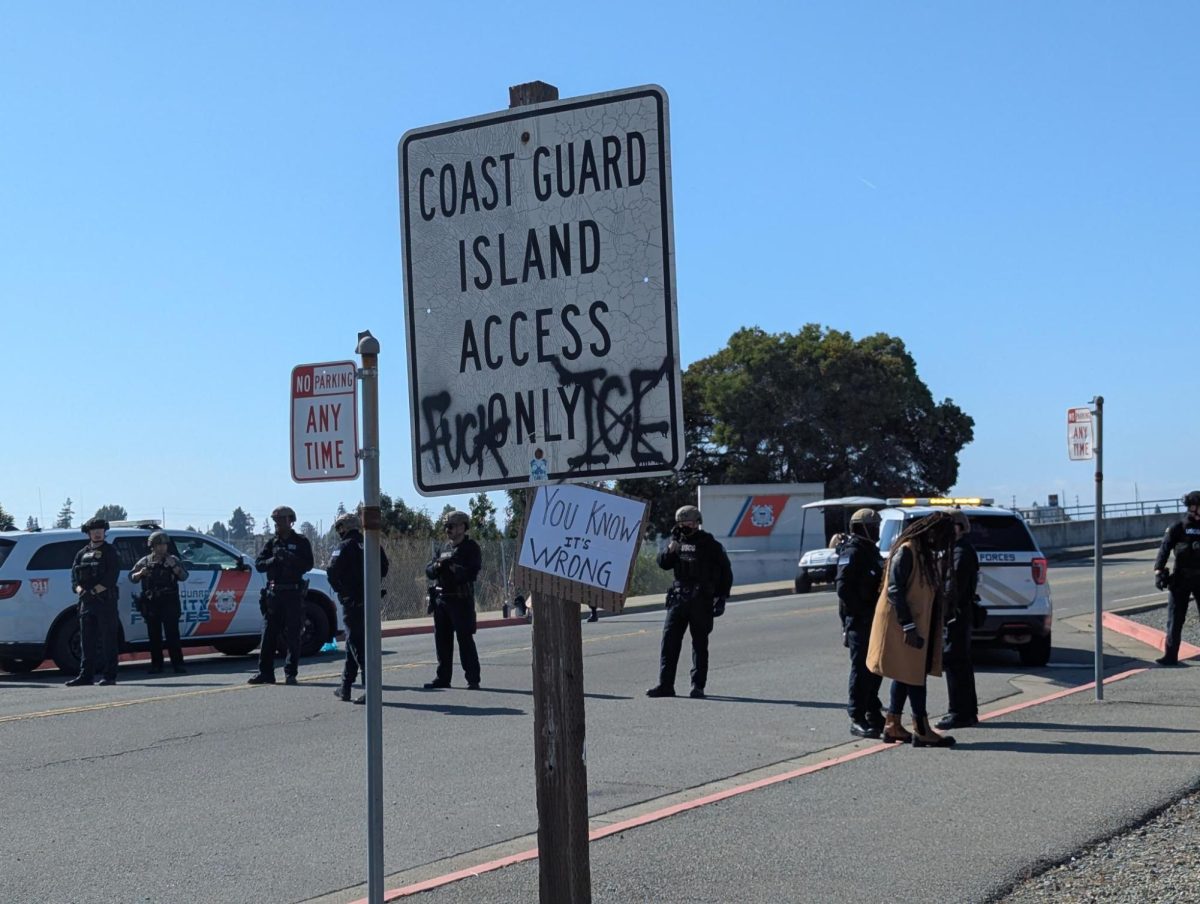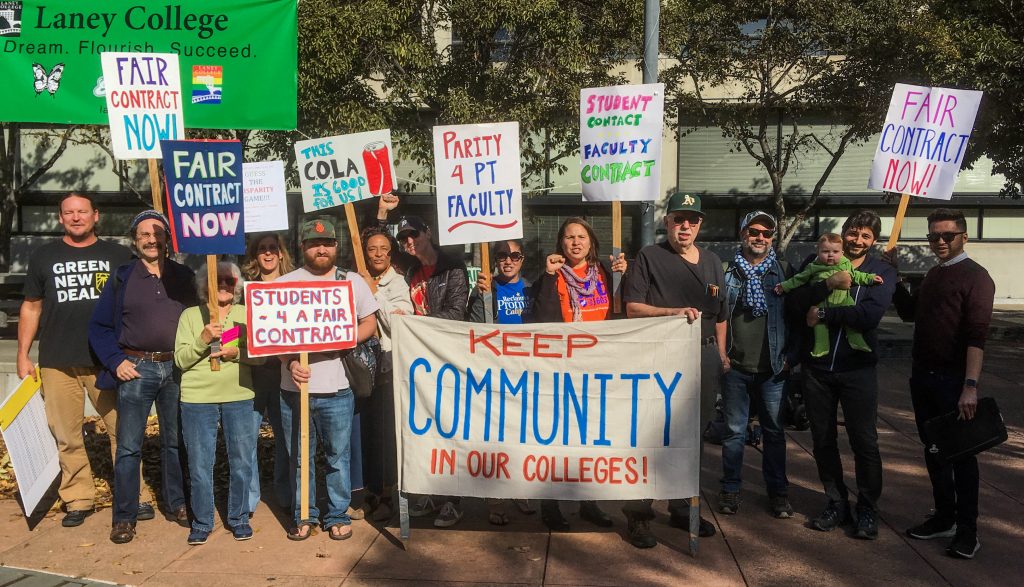The Peralta community has expressed concern over the district administration’s announcement that it has cut 6% of classes district-wide for the spring semester and will make additional class cuts in fall 2020 following recommendations from the Fiscal Crisis Management Analysis Team (FCMAT) report released in June 2019.
“The district has 2,261 less FTES (Full Time Equivalent Students) and 48 more FTEF (Full Time Equivalent Faculty) over the last five-year period. The combination of declining enrollment and increased staff creates a budget formula that is unsustainable,” said Vice Chancellor of Academic Affairs Siri Brown, quoting the FCMAT report in her Dec. 12 email addressing the issue. The result is “millions of dollars of lost revenue,” Brown said.
Although Chancellor Regina Stanback Stroud initially reported the decline in enrollment to be as high as 30 percent within the last five years, most recently during her speech at the District FLEX event at Merritt College on Jan. 16, Stanback Stroud later retracted her statement at the Jan. 21 Board of Trustees meeting after being prompted about the discrepancy by Laney math instructor and Faculty Senate President Fred Bourgoin.
“When you make a mistake in public…I think you also have to apologize in public,” Stanback Stroud said. “It looked like it was a 30% decline — it was not, it has been a 12-to-14% decline depending on where you look at it and at what point in time. That said — that is still significant.”
Stanback Stroud also said that another reason for the class cuts is the “significantly low productivity” of Peralta’s courses, which could have an even larger financial impact “to the tune of millions of dollars.”
Peralta’s productivity target is 17.5%. Generally speaking, this means that colleges would need to have at least 35 students in each three-unit class in order to be profitable. The number of students needed for a specific class varies depending on the number of units and other factors.
None of the four colleges have reached that target for at least three years, according to Peralta’s Enrollment Summary Report. Additionally, there are several factors which prevent the colleges from reaching that level of productivity, such as fire code capacity limits for classrooms, contract-mandated class “caps” and Career Technical Education (CTE) courses. Many of the CTE courses can’t fill to 35 because of safety issues around handling dangerous equipment.

Peralta faculty disagree with district approach.
Meanwhile, the district has come under fire from faculty who claim that the cuts are shortsighted.
“These are short-term solutions for long-term problems,” explained Blake Johnson, a full-time history instructor at Peralta since 2012.
“The district has been pushing for reducing the number of classes being offered on the theory that if you offer fewer classes, there will be more students per class. What makes that problematic is that we actually don’t get our revenue off productivity at all, our revenue is based off of enrollment,” Johnson said. He is concerned that when classes are cut, many students will fail to re-enroll.
“We’ve cut classes, and we’ve actually lost students — our enrollment is getting lower, and in fact, so far productivity is also decreasing. So not only do we have fewer classes, but we also have fewer students per class. So basically, it’s like a worst-case scenario,” Johnson said.
In response to this concern, the administration aims to mitigate the effect of class cuts by “offering courses in the evenings and weekends, online, and also offering courses during the day that are not in conflict with the same courses offered at our sister colleges,” according to Brown.
However, California community colleges will soon switch to a new funding model called the Student Centered Funding Formula (SCFF), which was approved by Governor Jerry Brown in 2018. The new formula shifts colleges from 100% enrollment-based funding to a student success model, awarding “points” for everything from student completion of transfer-level English and math in the first year, certificate completion, and the awarding of associate degrees for transfer. In the SCFF model, 40% of funding will be based on these points.
For now, California colleges are in a “hold harmless” period which is projected to last approximately two years. During these two years, the colleges are still receiving funding from the enrollment model as they transition to SCFF.
President of the Peralta Federation of Teachers (PFT) Jennifer Shanoski argues that the hold harmless period is an opportunity for Peralta to focus all efforts on maximizing enrollment.
“We have a stability of funding that we haven’t had in the fifty-something years that California community colleges have existed as we see them today…what we should be doing is everything we can to encourage enrollment, to get better and more offerings to students and grow our colleges.”
Ina Adele Ray is a part-time faculty member of the Berkeley City College Multimedia Department. She said that three of her classes had been cut before the fall semester even started. “I’m working for the union, and I’m a freelance worker, and it’s hitting me really hard,” she said.
Ray blames the fact that the college did not start advertising courses until two weeks before the beginning of the semester.
“It feels like they wanted to make it difficult for us because they want to make these austere cuts. Why even offer classes if you know you want to cut them?” she said.
Staff cuts not matched at the district level.
Among other recommendations, the FCMAT report advised that Peralta reduce its number of vice chancellors, which totaled six at the time.
“They seem to be willing to follow step-by-step the recommendations of the FCMAT around cutting and productivity, but when it comes to administration, they’re not interested in following those recommendations,” said Louis Quindlen, chair of machine technology at Laney College.
According to Mark Johnson, Peralta’s interim executive director of public information, communication and media, the vice chancellor count has already been reduced following the decision not to replace the vacant vice chancellor of student services position.
“It is likely that one more change will be made, but Chancellor Stanback Stroud has made it clear that we will not be reducing to the level recommended by FCMAT (which was only two or three) as our district needs dedicated, strong, and unapologetic administrative leadership now more than ever,” said Johnson.
On Jan. 21, Stanback Stroud’s leadership team grew when the Board of Trustees appointed Delisle Warden as Interim General Counsel/Chief of Staff. Warden’s salary range will be between $167,472-$212,130.
According to data from the State of California, the total number of Peralta’s educational administrators — which includes college deans and presidents, supervisors and program directors — has tripled, from 27 to 82 since 2000, despite only a marginal increase in enrollment. The Chancellor’s office did not provide a comment on these figures and did not specify plans to reduce the number of administrators.
“This crisis was not a crisis of our making. The previous administration [and] the previous board created this crisis — and so to attack our teachers to solve this crisis, to me, is a big mistake. To attack our students to solve this crisis is a big mistake,” Quindlen said.
James Millet contributed reporting.
Contact Saskia Hatvany at [email protected]



























